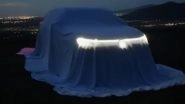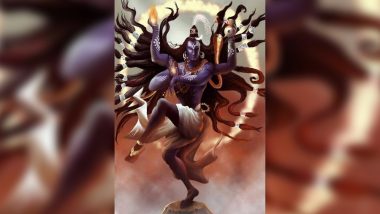The dance of Lord Shiva or the Shiva Tandav is said to be a fearsome one, leading to creation as well as the destruction of the universe. When Sati, his first wife, killed herself by jumping into her father Daksha’s sacrificial fire, Shiva unleashed his grief and fury by performing the Rudratandava. Carrying his wife’s charred remains on his shoulders, he performed the dance of destruction. As he danced, wild thunderstorms arose, the sun shattered and complete mayhem was unleashed onto the universe. It’s commonly believed that Shiva Tandava is performed only in rage. But there’s more to the Lord’s cosmic dance than just fire and destruction. On the occasion of Mahashivratri 2019, let’s understand more about this divine dance.
Lord Shiva is said to have two prominent states – that of Samadhi (intense state of consciousness) and Tandav (state of dance). The origin of the Lord’s tandava state is credited to Ravana, the demon king of Lanka. He was not only a powerful ruler but an accomplished scholar, a musician par excellence and an intelligent military strategist. An ardent devotee of Shiva, Ravana walked all the way up to Mount Kailasha once, the abode of Shiva, to meet him. He sang praises of the lord, chanting his name as he undertook his long arduous journey. Mahashivratri 2019: Reasons Why Lord Shiva is a Favourite God Amongst All!
For all his virtues, Ravana had his share of shortcomings too. He had a terrible lust for power and was egotistical. Lord Shiva was in deep meditation when Ravana reached Kailasha so he couldn’t acknowledge his devotee who had come a long way to see him.
Not surprisingly, his ego was hurt. Slighted by Lord Shiva’s behaviour, Ravana disregarded Nandi’s warning and lifted the entire Mount Kailasha for the Lord’s attention. Shiva opened his eyes and found out what had happened. He pressed down on Kailasha with his toe and the entire mountain landed on Ravana’s hands.
In terrible pain, Ravana realised the mistake in his actions and started singing the Shiva Tandava Stotram, a paean which praises the Lord for his greatness. Shiva was moved by Ravana’s gesture and released the mountain from under his toe. Mahashivratri 2019: Easy Bhang Recipes You Can Make This Maha Shivratri to Relish the ‘Nectar of the Gods.’
Watch video:
Shiva Tandav or Tandava is an unbridled dance of the Lord. It is believed that the world sprang forth from the cosmic dance of Shiva and the creation, sustenance and destruction of the universe depends on it.
The name Tandav is drawn from Tandu, the divine attendant of Lord Shiva. He was the one who instructed Bharatamuni, the writer of the great Natyashastra, about the various modes of Tandava – 108 karanas and 32 anghaharas.
It is wrongly believed that Shiva performs the Tandava only when he is in an angry mood called Rudra Tandava. But the dance is performed also in ecstasy or happiness called Ananda Tandava. He also performs other types called Tripura Tandavan, Sandhya Tandava, Samara Tandava, Kaali Tandava, Uma Tandava and Gauri Tandava.
Shiva Tandava, according to religious experts, is a cosmic dance that is said to represent every aspect of the Universe. It symbolises creation and destruction, and the rhythm of births and deaths.
A two-meter tall statue of Lord Shiva in his Nataraja pose was installed outside CERN in Geneva in 2004 to celebrate its long association with the Indian government. The dance of Shiva is the dance of life. And for modern physicists, it also symbolises the dance or tandav of subatomic particles, the basis of all life on earth.
(The above story first appeared on LatestLY on Mar 03, 2019 08:00 AM IST. For more news and updates on politics, world, sports, entertainment and lifestyle, log on to our website latestly.com).













 Quickly
Quickly


